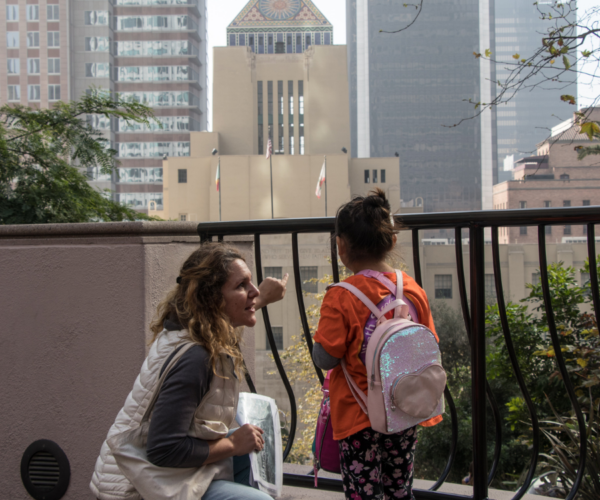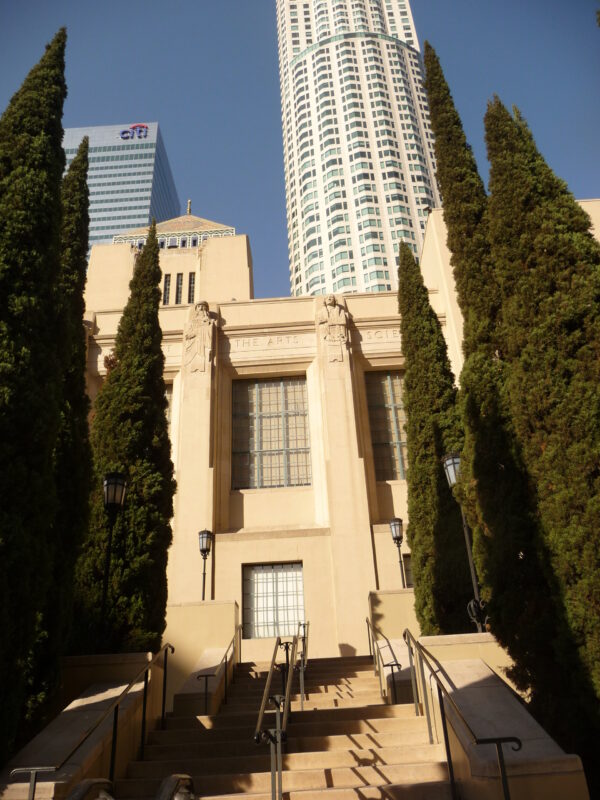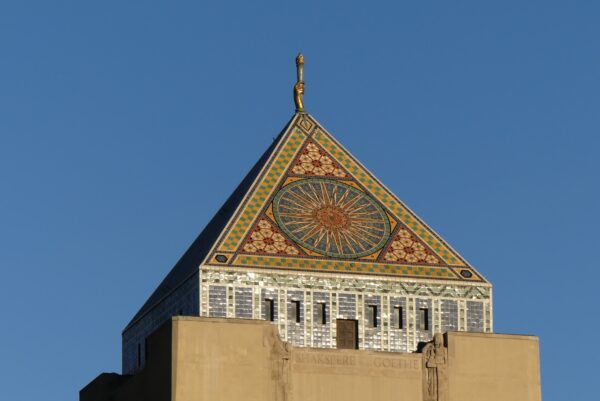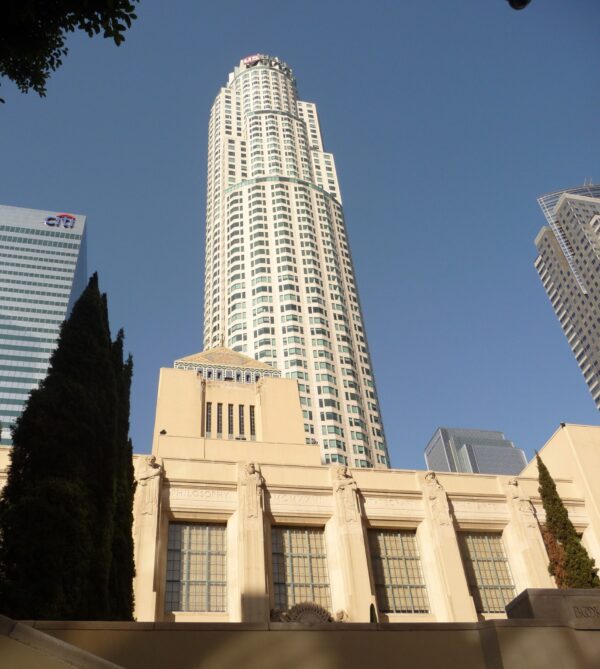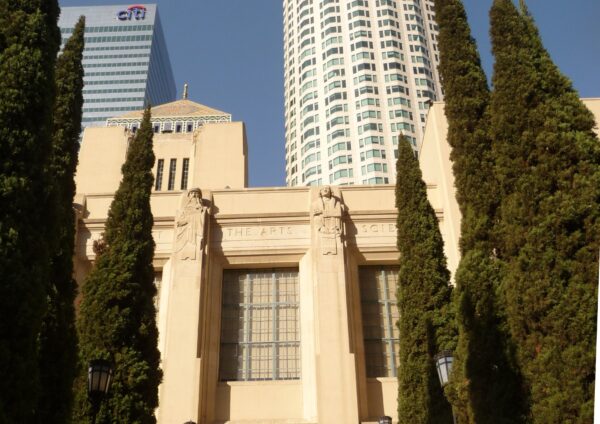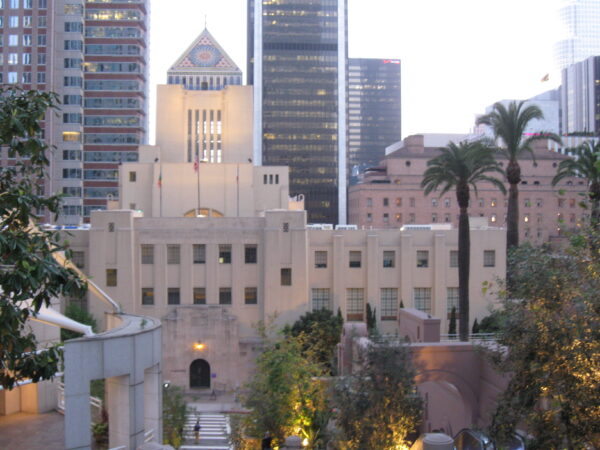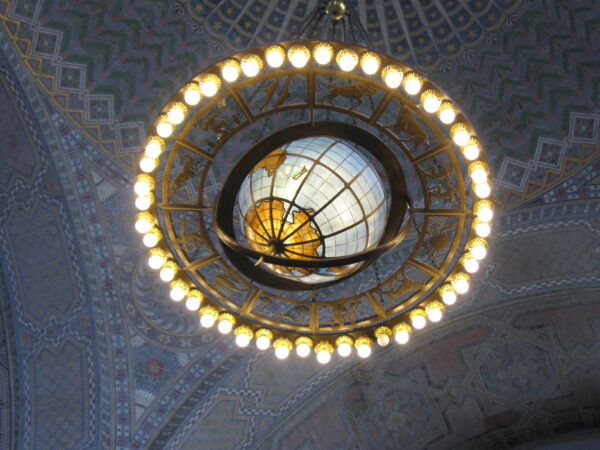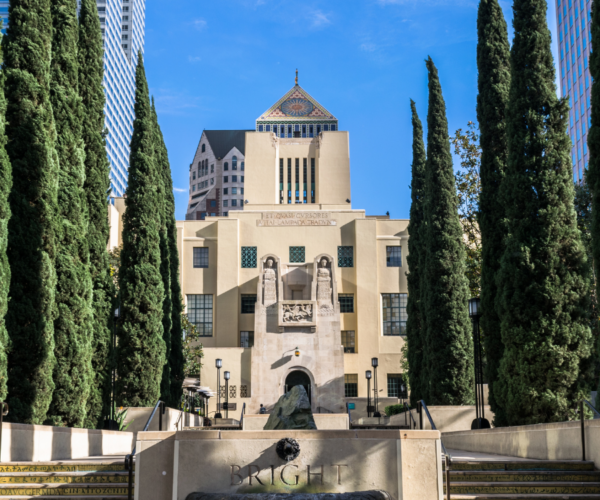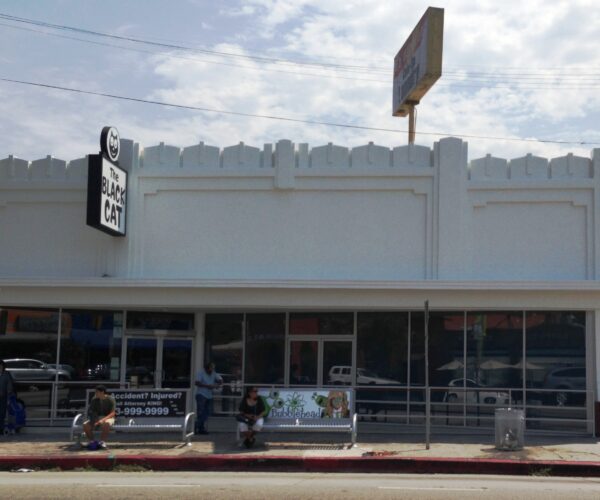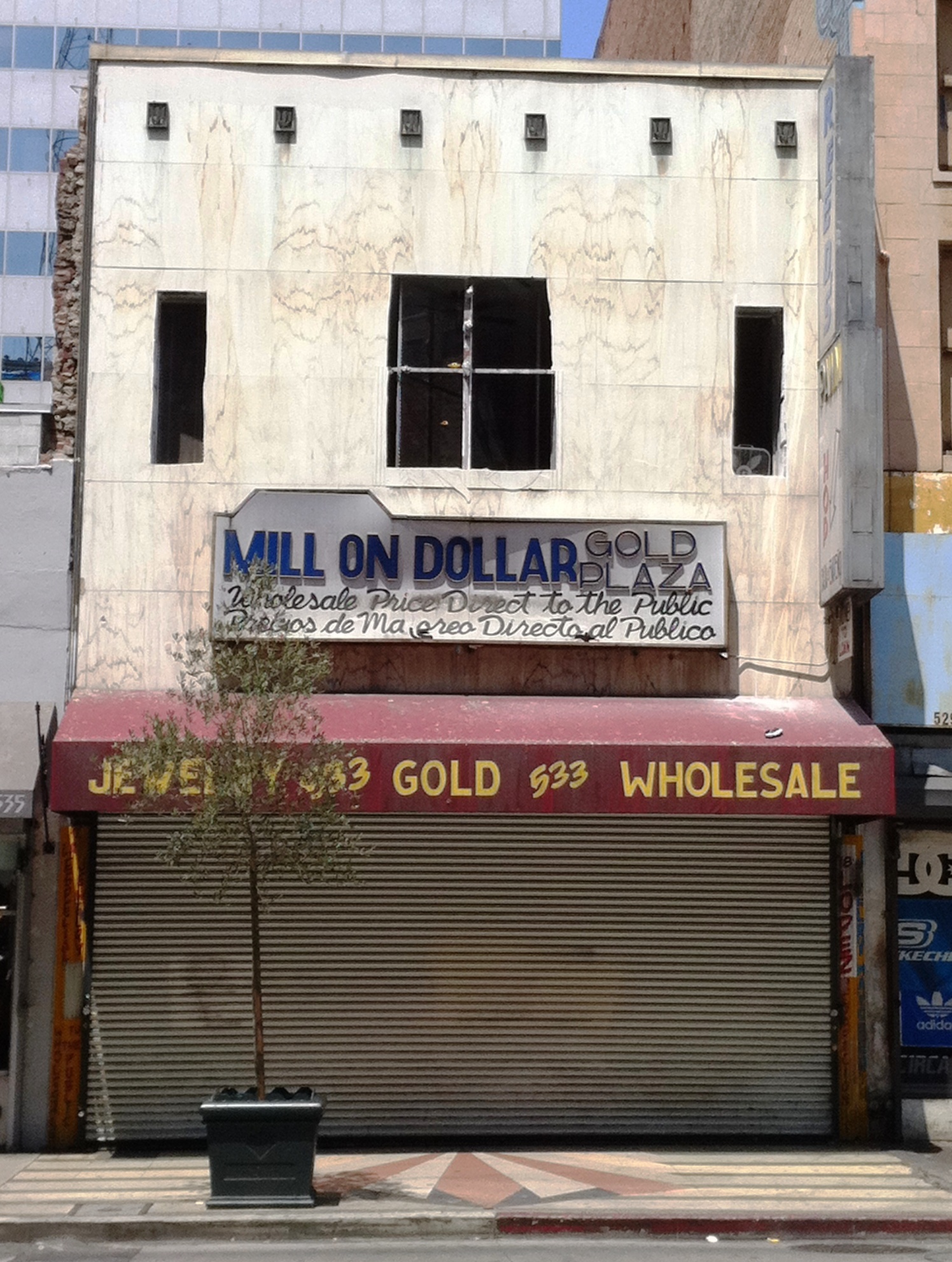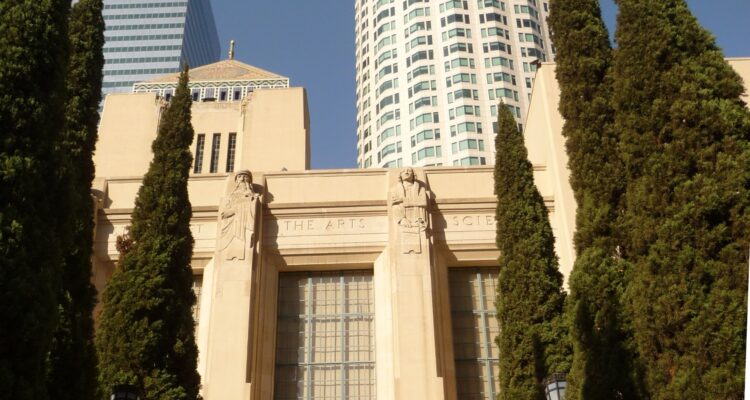
Place
Los Angeles Central Library
The Los Angeles Central Library blends the past with the modern age. Its proposed demolition in the 1970s led to the formation of the L.A. Conservancy.
Saved
The fight to save the Central Library was the Conservancy’s first victory.
Place Details
Address
Get directions
Phone Number
Website
Property Type
Government Officials
Community
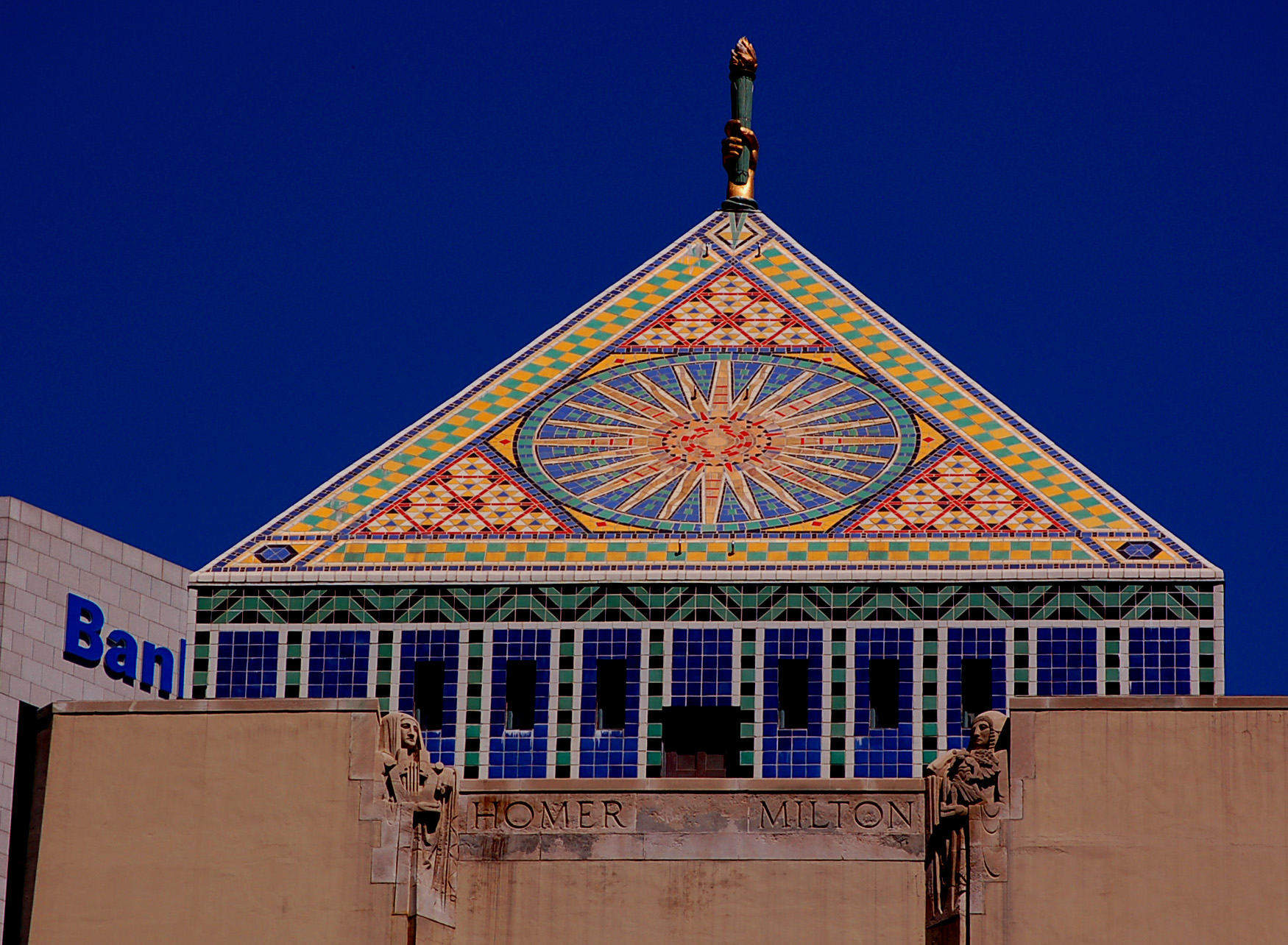
Photo by Zeetz Jones
Overview
The last work of the major American architect Bertram Grosvenor Goodhue, the 1926 Los Angeles Central Library is an architectural treasure beloved by countless Angelenos. Today, it’s hard to believe the building could ever be threatened with demolition.
Yet, despite its undeniable importance and designation as a Los Angeles Historic-Cultural Monument, the Central Library was threatened with demolition and insensitive alterations beginning in the late 1960s.
The long-standing threat to the Central Library, along with the loss of other important Los Angeles landmarks, spurred the creation of the Los Angeles Conservancy in 1978. Years of advocacy by the Conservancy and other preservationists with the support of government, business, and community leaders led to a creative solution that preserved the building and changed Los Angeles’ skyline.
About This Place
About This Place
When it opened in 1926, the building’s expanses of unadorned concrete and skyscraper-like profile heralded Modern architecture. At the same time, it alluded to ancient Egyptian, Roman, Byzantine, and various Islamic civilizations, as well as to Spanish Colonial and other revival styles.
By the mid-1960s, functional problems with Central Library were mounting, including inadequate space, outdated electrical and mechanical systems, deferred maintenance, and limited onsite parking. Over the next decades, preservationists advocated against demolition and sought a solution that would preserve the historic building, and sensitively expand the library.
In 1989, the renovated library re-opened. The new expanded East Wing more than doubled the library’s size, and the re-established historic West Lawn became the Maguire Gardens. Other components of the project, known as Library Square, included the Lawrence Halprin-designed Bunker Hill Steps and a return of a landscape area to the Flower Street side of the library.
Ornamental and symbolic artworks are integral to the library’s design. The limestone sculptures on the building’s exterior, by artist Lee Lawrie, represent various disciplines and literary figures. The brilliantly colored tile pyramid at the building’s summit features a sunburst and is topped by a handheld torch symbolizing the light of knowledge.
The second floor of the library features a high-domed rotunda exploding with light and color. At the center of the dome is a stylized sunburst and an illuminated globe chandelier with the signs of the zodiac. On the surrounding walls, twelve murals painted by Dean Cornwell in 1933 depict the history of California.
The approved Central Library project, supported by the Conservancy, represented a creative solution to address the growing needs of the library. The architectural firm of Hardy Holzman Pfeiffer and Associates was retained to add a wing to the Central Library that would complement and be compatible with the landmark. A financing package was brokered with Maguire Thomas Partners, in which the developer contributed more than $125 million through a combination of density transfer, land purchase, incremental tax financing, and in-kind contributions. In exchange, the developer received the air rights to the library building, which allowed them to develop what would become Library Tower (now US Bank Tower) and the Gas Company Tower, two of the tallest buildings in Los Angeles.
However, a series of disasters, including an arson fire and the Whittier Narrows earthquake, delayed the renovation plan until 1989. The careful conservation of the original Central Library was researched extensively, and the library was rehabilitated with high standards of workmanship. Many art and architectural conservators wrote detailed specifications on methods and materials for cleaning and restoring all historic surfaces, and the individual subcontractors then performed tests and created mock-ups to make sure that all work was done properly and professionally.
Our Position
A masterpiece of architectural design, the Central Library attests to both the cultural achievements and the historical developments of the City of Los Angeles. The library defines the sense of space in the downtown area and also contributes to its unique identity. This belief, and the loss of landmarks across Los Angeles, spurred the formation of the Conservancy in 1978.
The nascent Conservancy spearheaded a Citizens’ Task Force for Central Library Development to seek a viable solution that addressed the functional needs of the library and the cultural significance of the historic building. The task force included representatives from downtown corporations such as ARCO, as well as librarians, developers, architects, and city officials. The Conservancy also organized grassroots campaign in response a proposal to demolish the library to construct an entirely new facility.
The Conservancy supported the final renovation plan that was approved in 1985. In 1993 — more than fifteen years after the building was first threatened with demolition — the Central Library re-opened in a grand community celebration. Angelenos were again able to experience and use the rehabilitated landmark as envisioned by Goodhue.
